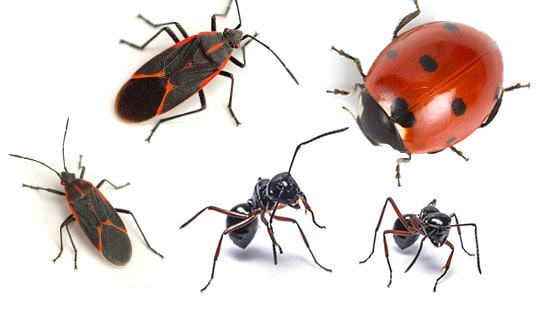Occasional Invaders Season by Season
Pest Press Newsletter

Each season of the year brings with it varying pest pressures. The numbers and kinds of pests that may invade are influenced by the weather of the previous year and season, or could simply invade "on occasion."
These pests, that are not capable of breeding indoors and live primarily outdoors, but will enter structures for shelter, while foraging for food, or accidentally, are known as occasional invaders. In the winter the pests often are seeking warmth or hidden areas to overwinter. In the spring, the warmth can awaken the overwintering, and the rains can saturate the ground forcing others to seek dry shelter; and the summer can bring new populations of varying types. Then, as the cold of fall settles in, pests once again begin seeking shelter, and the seasonal cycle starts anew.
Although they may enter in large numbers, they do little damage, so most occasional invaders are simply considered nuisance pests because they cannot survive for long periods indoors, however the sighting of any insect or wildlife can be enough to lose a customer – or invoke a fine. Additionally, in food plants, operating rooms, clean room in pharmaceutical plant manufacturing which have zero tolerance for pests, they will be considered a contaminant. Many of these pests, such as ticks and mosquitoes also pose serious health threats.
Occasional invaders enter structures through the attraction to the structure or surroundings based on following:
- Light-Attracted Pests: Nocturnal insects attracted to UV lighting on, in, or around structures at night.
- Examples: Aquatic insects (i.e. midges, mayflies), Beetles (i.e. June beetles, ground beetles) and moths
- Overwintering Pests: In fall, these migrate or move indoors in many regions through doors, vents, eaves, beneath siding to reside within cool voids, attics inside structures for duration of cold season. They do not feed or reproduce indoors.
- Examples: lady beetles, boxelder bugs, stink bugs, cluster flies, inseminated female wasps, leaf-footed bugs
- Miscellaneous Pests: These pests move indoors due to 1) outdoor environmental factors becoming too hostile (i.e., too dry or excess moisture); 2) randomly or accidentally enter structures; or 3) seeking food or harborage sites.
- Examples: earwigs, centipedes, crickets, spiders
No single general management method exists for all occasional invaders. But you can help reduce entry through:
- Exclusion: sealing entry points where possible, screening, positive air flow (where applicable), air curtains
- Lighting Manipulation: where applicable
- Exterior Targeted Treatments: treatments during certain seasons focused on area where pest populations may establish or on interception areas or point of entry depending on geography and local conditions
To help reduce the occasional invasion of these pests, it also is important to understand what may be expected each season. While this also can vary by geographic region, following are the most common pests that may invade through the year or on a seasonal basis:
- Summer: Mosquitoes, ants, centipedes, spiders, stinging insects
- Fall: Asian lady beetles, boxelder bugs, cluster flies
- Winter: Asian lady beetles, boxelder bugs, cluster flies
- Spring: Mosquitoes, ants, millipedes
- Spring Ant Elimination. While there are situations in which sprays are recommended for ants (such as direct mound spray and preventive perimeter treatments), in most cases, baits will be the most effective form of treatment. Why? Because sprays kill only the ants they contact, while baits will be eaten by the worker ants, carried back to the nest, and fed to the queen – thereby taking down the entire colony.


